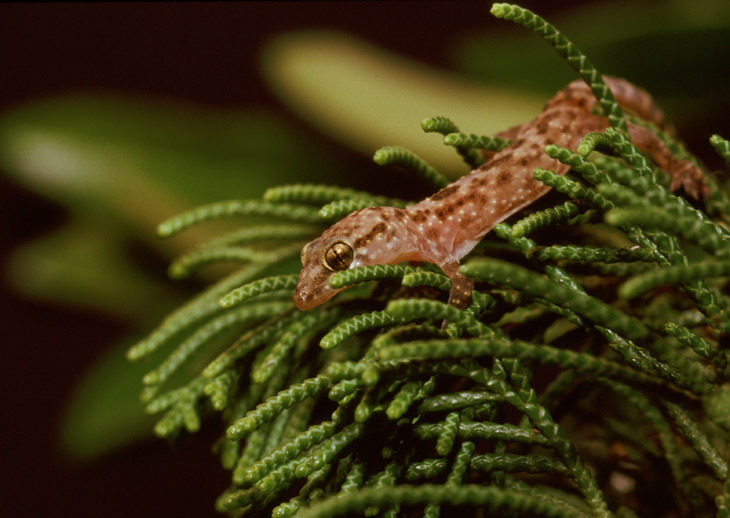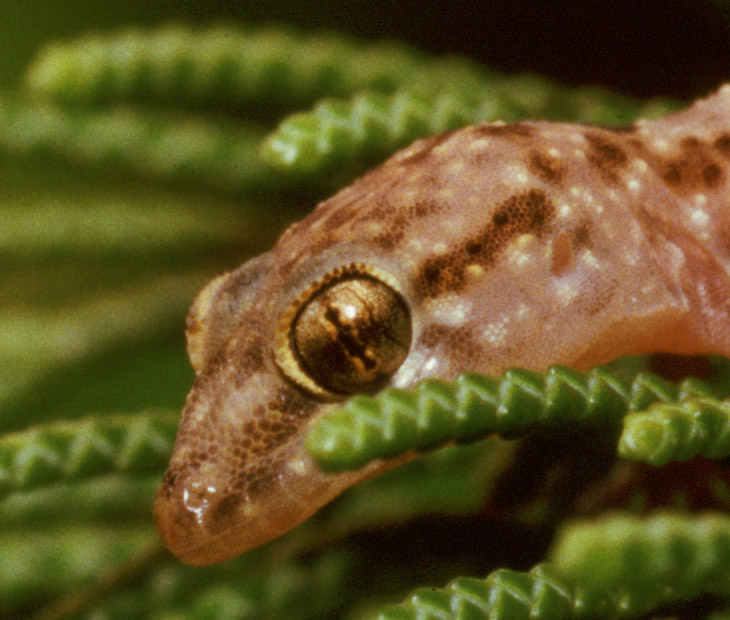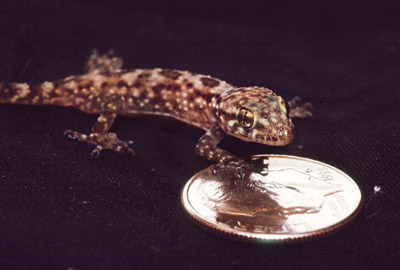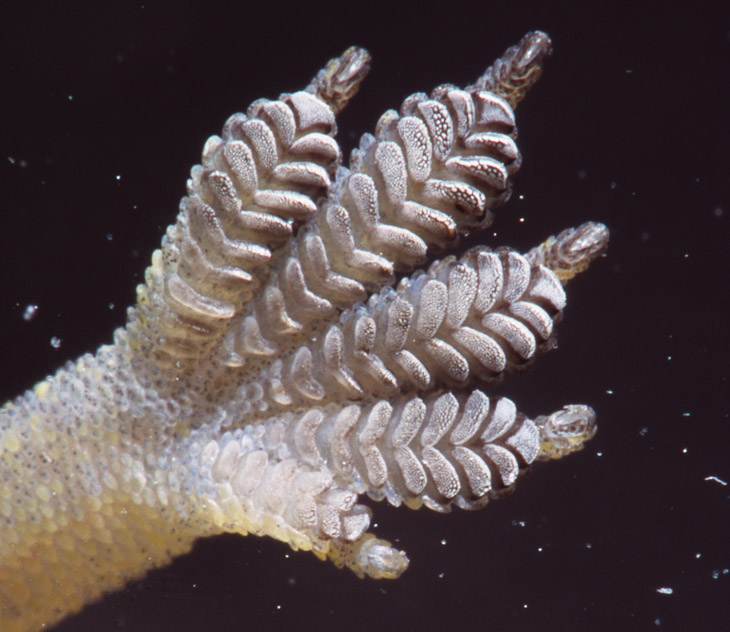
This week, we hearken back to my brief interlude in Texas, when I stayed in Houston for a couple of months in 2001; September and October, actually – I had two job interviews on September 11th, and to no one’s surprise, didn’t nail either of them. Which I’m kinda glad about, because I really didn’t like Texas, but that’s irrelevant. My photography was sparse then, yet one of the few subjects that I captured (literally) during my stay was a Mediterranean house gecko (Hemidactylus turcicus.) Geckos are adept at clinging to any surface and can run across a ceiling with ease, which of course meant that my methods of housing this one for even the short photo session had to take this into account. The setting seen here is all artificial, a small sprig cut from a variety of landscaping bush placed in front of a house plant. It really didn’t take much, which you’ll understand once you see the size of my model here. But first, let’s take a closer look at that eye.

This is a full-resolution crop of the original slide (even the one above it was cropped a little from the full frame,) and you can see the limits of the grain and focus, with some potential loss from the Minolta Scan Dual III scanner. But those pupils! I get a kick out of the different types of pupils displayed by some animals, and knowing how the shape of the opening affects focus quality, I’m curious as to what difference this makes to the species that have them, but as yet I have no real information – it’ll be a subject for a later post. Now, let’s see why this was so challenging to show clearly.
 I’ve been having a hell of a time getting the color register right for these slides and I have to see if I can zero out the color balance of the scanner, but this one, unlike the slide above, has a better excuse: I had forgotten to calculate the light loss from the extension tubes that I used to get closer for this frame, so the slide was too dark, lightened in editing for my purposes here. The key part, of course, is the dime for scale, showing just how small my specimen is, and while this might be slightly smaller than average for the species, it’s not by much. Take out a dime for comparison right now, because the eye was about the same size as three digits of the date, and this was before I had developed my macro skills and equipment to the point they are now. The Sigma 105 EX Macro was a good performer (up until the aperture started acting up,) but I don’t think it compares to the Mamiya 80 Macro.
I’ve been having a hell of a time getting the color register right for these slides and I have to see if I can zero out the color balance of the scanner, but this one, unlike the slide above, has a better excuse: I had forgotten to calculate the light loss from the extension tubes that I used to get closer for this frame, so the slide was too dark, lightened in editing for my purposes here. The key part, of course, is the dime for scale, showing just how small my specimen is, and while this might be slightly smaller than average for the species, it’s not by much. Take out a dime for comparison right now, because the eye was about the same size as three digits of the date, and this was before I had developed my macro skills and equipment to the point they are now. The Sigma 105 EX Macro was a good performer (up until the aperture started acting up,) but I don’t think it compares to the Mamiya 80 Macro.
I mentioned geckos’ ability to climb, and this is due to the special structures of their feet. A few years later in Florida, I captured another variety and housed it in a small macro tank for some detail shots of the feet.

This specimen is different from the Mediterranean house gecko above, and much larger, but I didn’t pin down the species while I had it, and didn’t get any good shots of the eyes. While the foot looks petty cool, the structures that actually allow geckos to cling to just about anything are microscopic and not going to show in a mere macro photo. This is still the Sigma 105 and extension tubes, by the way – the subject was much more restrained in movement and I wasn’t worried about having to snag it before it ran away across the apartment, so that probably helped my steadiness and subsequent sharpness.
This shot is done vertically and believe me, the gecko wasn’t having any difficulty running up and down the glass. I didn’t see anywhere near enough of them and caught much fewer (I think these represent the only two that I’ve ever had my hands on and both were released after the photos,) but they’re very cool to observe. Since they’re nocturnal, checking out the places where lights sit near foliage are the best places to look, since that’s where they’re most likely to be found hunting insects.




















































